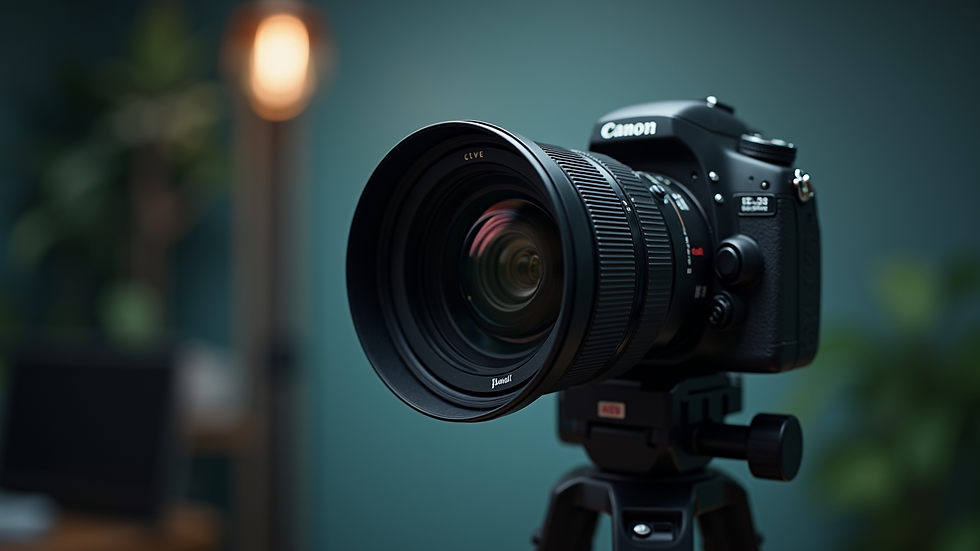Finding the Right Photographer Near You
- Taylor Stevens

- Oct 21
- 4 min read
Choosing the right photographer can make all the difference in capturing your special moments or professional needs. Whether you need portraits, event coverage, or commercial photography, finding a skilled and reliable photographer nearby is essential. This guide will walk you through practical steps and tips to help you discover the best local photography options that fit your style, budget, and expectations.
Understanding Local Photography Options
When searching for a photographer, local options offer several advantages. Local photographers are familiar with the area, which can be a huge benefit for location shoots. They often know the best spots for lighting, backgrounds, and unique settings that can enhance your photos.
Benefits of Choosing Local Photographers
Convenience: Scheduling and communication are easier when the photographer is nearby.
Cost-Effective: Local photographers usually have lower travel expenses, which can reduce your overall cost.
Community Connection: Supporting local talent helps build community relationships and often results in more personalized service.
How to Find Local Photographers
Start by searching online using terms like "photographer near me". This will give you a list of professionals in your area. Check their websites, portfolios, and reviews to get a sense of their style and reputation.
You can also ask for recommendations from friends, family, or local social media groups. Visiting local art galleries or photography exhibitions can introduce you to talented photographers in your community.

Key Factors to Consider When Choosing a Photographer
Selecting the right photographer involves more than just finding someone with a camera. Here are some important factors to keep in mind:
Style and Portfolio
Every photographer has a unique style. Some specialize in candid shots, while others focus on posed portraits or artistic compositions. Review their portfolio carefully to ensure their style matches your vision.
Experience and Expertise
Experience matters, especially for complex shoots like weddings or commercial projects. Ask about their background, training, and the types of photography they excel in.
Equipment and Technology
Modern photography relies on quality equipment. Inquire about the cameras, lenses, and lighting tools they use. A well-equipped photographer can adapt to different environments and deliver better results.
Pricing and Packages
Understand the pricing structure upfront. Some photographers offer packages that include prints, digital files, or albums. Make sure you know what is included and if there are any additional fees.
Communication and Professionalism
Good communication is key to a successful shoot. Choose a photographer who listens to your needs, answers questions promptly, and maintains professionalism throughout the process.

What is the 20 60 20 Rule in Photography?
The 20 60 20 rule is a composition guideline that helps photographers create balanced and visually appealing images. It divides the frame into three horizontal sections:
Top 20%: This area often contains the sky or background elements.
Middle 60%: The main subject or focal point should occupy this central portion.
Bottom 20%: This section includes foreground elements or ground details.
Using this rule helps maintain harmony and guides the viewer’s eye naturally through the photo. It is especially useful in landscape and portrait photography to avoid clutter and emphasize the subject.
Applying the 20 60 20 Rule
When shooting portraits outdoors, position your subject in the middle 60% of the frame.
Use the top 20% for interesting sky textures or architectural features.
Include foreground elements like flowers or pathways in the bottom 20% to add depth.
This simple technique can elevate your photos and is often employed by professional photographers to create stunning compositions.
Tips for Working with Your Photographer
Once you have selected a photographer, the next step is to ensure a smooth and productive collaboration. Here are some actionable tips:
Prepare Your Ideas
Share your vision, preferred style, and any specific shots you want. Providing examples or mood boards can help the photographer understand your expectations.
Choose the Right Location
Discuss potential locations with your photographer. Local experts can suggest spots that suit your theme and lighting needs.
Be Open to Suggestions
Photographers bring creative ideas to the table. Be open to their recommendations on poses, angles, and timing.
Plan for Timing and Lighting
Natural light is often the best for photography. Schedule your shoot during golden hours - early morning or late afternoon - for soft, flattering light.
Dress and Props
Coordinate your outfit and props to complement the setting and style. Avoid busy patterns or logos that can distract from the subject.

Making the Most of Your Photography Experience
Finding a photographer near me is just the beginning. To get the best results, consider these final recommendations:
Review the contract carefully: Understand the terms, delivery timelines, and usage rights.
Stay relaxed and natural: Authentic expressions make the best photos.
Follow up for edits and prints: Communicate any preferences for retouching or print sizes.
Share your feedback: Positive reviews help photographers grow and assist others in making informed choices.
By investing time in research and communication, you can ensure your photography experience is enjoyable and the results exceed your expectations.
Exploring Your Local Photography Community
Engaging with your local photography community can open doors to new opportunities and inspiration. Attend workshops, join photography clubs, or participate in local photo walks. These activities help you connect with professionals and enthusiasts alike.
Local photographers often collaborate on projects, exhibitions, and events. Supporting these initiatives strengthens the creative network and enriches your own appreciation of photography.
Finding the right photographer near you is a journey that combines research, communication, and creativity. With the right approach, you can capture moments that last a lifetime and create images that truly reflect your story.



Comments